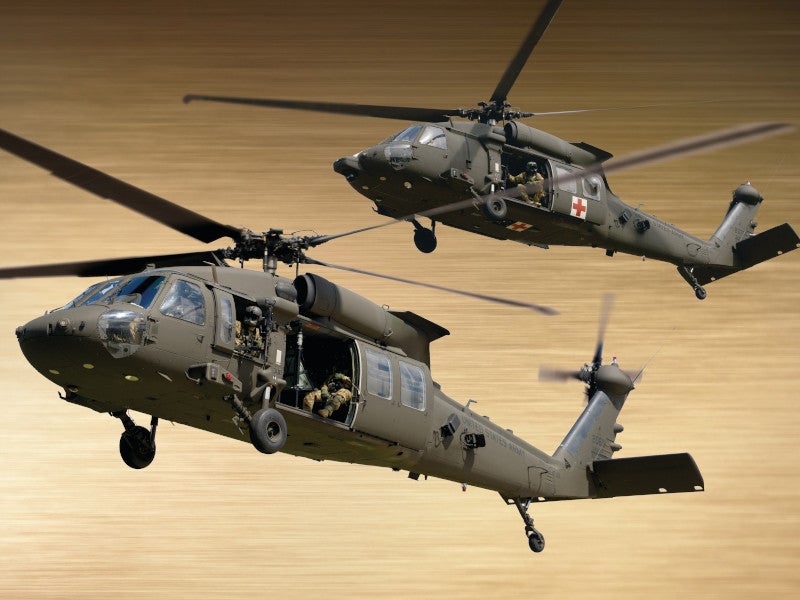Navigating Success: UH 60 Helicopter Upkeep Best Practices
Navigating Success: UH 60 Helicopter Upkeep Best Practices
Blog Article
Understanding the Mechanics and Engineering Behind Uh 60 Helicopters
The UH-60 helicopter, frequently recognized as the Black Hawk, stands as a pinnacle of contemporary rotorcraft innovation, symbolizing a mix of durable design and intricate mechanics. As we peel off back the layers of the UH-60's design, a globe of detailed systems and meticulous engineering comes to light.
History of UH-60 Helicopters
The background of UH-60 helicopters traces back to the late 1970s when the United States Army sought a flexible and advanced energy helicopter to change its aging fleet. In reaction to this need, the Sikorsky Airplane Company developed the UH-60 Black Hawk helicopter. Introduced in 1979, the UH-60 rapidly became a staple in army operations due to its remarkable abilities.
The UH-60 was made to succeed in a range of missions, consisting of troop transportation, clinical emptying, electronic war, and special procedures. Its capability to adapt to various functions made it a valuable property to the U.S. uh 60. Military and various other army forces around the globe
Throughout the years, the UH-60 system has undergone numerous upgrades and variations to boost its performance and equal progressing mission demands. These helicopters have seen considerable service in conflicts such as the Gulf War, Afghanistan, and Iraq, showcasing their reliability and convenience in diverse functional environments. The UH-60's rich background is a testament to its long-lasting tradition as a top utility helicopter.

Engine and Power Systems
Utilizing cutting-edge propulsion modern technology, UH-60 helicopters are outfitted with innovative engine and power systems to ensure optimum efficiency and dependability in a series of operational circumstances. The UH-60, commonly referred to as the Black Hawk, is powered by 2 General Electric T700-GE-701D engines, each efficient in delivering up to 1,940 shaft horse power. These turboshaft engines offer the essential thrust for the helicopter to accomplish its missions effectively, consisting of army transport, clinical emptying, and combat assistance.

Rotor System and Aerodynamics
Exactly how do the rotor system and aerodynamics of UH-60 helicopters contribute to their operational performance and trip abilities? The rotor system of the UH-60 helicopter plays an essential function in supplying lift and propulsion.
Aerodynamics also play a vital function in the performance of UH-60 helicopters. The streamlined body and blades blade design reduce drag, permitting the helicopter to accomplish greater speeds and far better fuel efficiency. The wind resistant style of the UH-60 additionally adds to its capacity to run in diverse ecological conditions, consisting of high altitudes and hot temperatures.
Avionics and Flight Control Equipment

In its complex coordination with the rotor system and aerodynamics of UH-60 helicopters, the avionics and flight control systems form a crucial network of innovations shaping the airplane's operational capacities. Avionics encompass the electronic systems made use of for interaction, navigation, and keeping an eye on various airplane features. In the UH-60, these systems include electronic displays, interaction radios, general practitioner navigation, weather condition radar, and autopilot systems. These avionics systems give vital information to the pilots, improving situational recognition and making sure secure and reliable procedure of the helicopter.
The flight control systems of the UH-60 are in charge of equating the pilot's inputs right into the ideal modifications to the blades system, ensuring stable flight and maneuverability. These systems include hydraulic actuators, servos, and computer systems that work together to control the main and tail rotors, as well as various other trip control surface areas. By specifically taking care of the helicopter's trip characteristics, these systems make it possible for pilots to do a vast array of goals, from transportation and search-and-rescue to battle procedures, with accuracy and confidence.
Role and Applications in Aviation
Avionics systems in UH-60 helicopters include a range of digital systems that help in navigation, interaction, monitoring, and regulating various airplane functions. These systems consist of electronic displays, auto-pilot systems, communication discover here radios, GPS additional reading navigating equipment, and climate radar. Furthermore, these systems include safety and security features such as auto-pilot settings, terrain recognition cautioning systems, and security enhancement systems to enhance the general safety and security and functional capabilities of the UH-60 helicopters in different goals, consisting of troop transport, clinical evacuation, search and rescue, and aerial firefighting.
Final Thought
To conclude, the UH-60 helicopter is a versatile aircraft with an abundant background and advanced engineering. Its engine and power systems, rotor system, the rules of aerodynamics, avionics, and trip control systems all function together to make it a efficient and trusted machine. The UH-60's role and applications in aviation are huge, varying from army procedures to look and save missions. Its continued advancement and use demonstrate its value in the area of aeronautics (uh 60).
In its complex sychronisation with the rotor system and aerodynamics of UH-60 helicopters, the avionics and flight control systems create an important network of innovations forming the aircraft's operational capabilities.The trip control systems of the UH-60 are liable for translating the pilot's inputs right into the proper modifications to the rotor system, ensuring secure trip and maneuverability. Avionics systems in UH-60 helicopters include an array of click site digital systems that aid in navigating, interaction, tracking, and controlling numerous aircraft functions. Additionally, these systems include safety and security attributes such as auto-pilot modes, terrain understanding cautioning systems, and stability augmentation systems to boost the general safety and security and operational abilities of the UH-60 helicopters in different missions, consisting of troop transportation, medical discharge, search and rescue, and airborne firefighting.
Its engine and power systems, rotor system, the rules of aerodynamics, avionics, and flight control systems all function with each other to make it a efficient and trusted maker.
Report this page